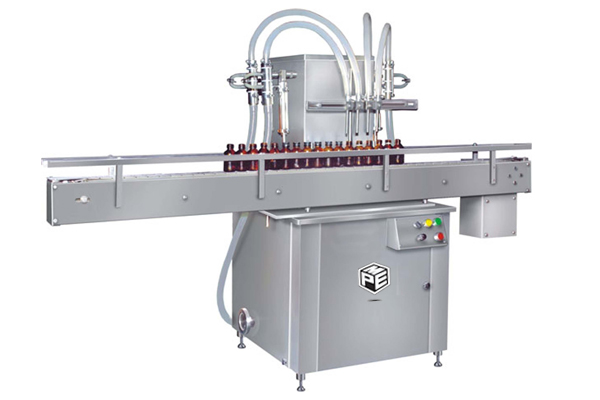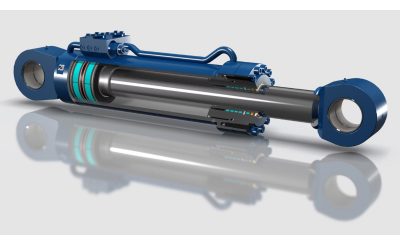In the heart of Singapore’s bustling industrial districts, a liquid filling machine hums quietly through the night shift, methodically dispensing precisely measured doses of hand sanitiser into countless bottles. Each mechanical breath of the apparatus represents something far greater than mere automation—it embodies the convergence of human ingenuity and technological precision that has propelled this island nation to become Asia’s fifth-largest machinery producer.
Walk through any modern manufacturing facility today, and you’ll witness a choreographed dance between human operators and their mechanical partners. These aren’t just machines; they’re the unsung heroes of an industry that touches every aspect of our daily lives, from the morning coffee we pour to the medicines that heal us.
The Heart of Modern Manufacturing
The story of liquid filling technology reads like a testament to human determination. Behind every perfectly filled bottle lies decades of engineering refinement, where each innovation was born from a manufacturer’s struggle to balance speed with precision, efficiency with quality. In Singapore’s manufacturing ecosystem, where space is precious and every square metre must justify its existence, these machines represent the perfect marriage between technological sophistication and economic necessity.
Singapore’s manufacturing production has doubled over the past 15 years, and liquid filling machines have been silent catalysts in this remarkable transformation. The precision engineering required for these systems reflects Singapore’s broader industrial philosophy: when resources are limited, excellence becomes non-negotiable.
Consider the pharmaceutical technician who monitors a semi-automatic filling line during the early morning shift. Her work isn’t merely about pressing buttons and watching gauges—she’s part of a global supply chain that ensures life-saving medications reach patients with the exact dosage they need. The liquid filling machine she operates represents years of research into volumetric accuracy, contamination prevention, and regulatory compliance.
Innovation Driving Industry Evolution
The filling machines and equipment sector has evolved far beyond simple liquid dispensing. Today’s systems incorporate intelligent sensors that detect container presence, adjust fill volumes automatically, and even halt operations when quality parameters drift outside acceptable ranges. This technological sophistication reflects a deeper understanding of manufacturing psychology: the best machines don’t just fill containers—they give operators confidence.
- Volumetric precision that maintains accuracy within 0.1% tolerances
- Adaptive technology that adjusts to different container sizes automatically
- Contamination prevention systems that protect both product and consumer
- Energy efficiency features that reduce operational costs whilst maintaining output
- User-friendly interfaces that minimise training requirements and operational errors
The global market tells a compelling story of growth and opportunity. The global liquid filling machines market size is projected to grow from $6.82 billion in 2025 to $10.39 billion by 2032, exhibiting a CAGR of 6.2%. These aren’t merely statistics—they represent thousands of manufacturing jobs, countless hours of research and development, and the dreams of entrepreneurs who see opportunity in precision.

Singapore’s Strategic Manufacturing Position
In Singapore’s manufacturing landscape, liquid filling technology represents more than industrial capability—it symbolises the nation’s commitment to high-value production in a space-constrained environment. Singapore is also the 5th largest machine producer in the Asia Tri-Region, with total machinery output of $27bn in 2022. This achievement reflects a strategic focus on sophisticated manufacturing processes that maximise output per square metre.
Local manufacturers understand that success in liquid filling requires more than purchasing equipment—it demands partnership with suppliers who understand the unique challenges of operating in Singapore’s regulatory environment. The island’s manufacturers have become increasingly sophisticated in their approach to liquid filling solutions, often requesting customised configurations that reflect their specific product characteristics and market requirements.
A fascinating aspect of Singapore’s liquid filling industry is how it mirrors the nation’s broader economic philosophy. Just as Singapore transformed from a trading post to a financial hub through strategic positioning and relentless quality focus, its manufacturing sector has evolved from low-cost production to high-value precision engineering.
The Human Element in Automated Processes
Behind every successful liquid filling operation stands a team of dedicated professionals who understand that technology serves people, not the reverse. The most advanced automatic liquid filling systems still require human judgment, particularly when product changeovers demand rapid reconfiguration or when quality issues require immediate intervention.
Experienced technicians develop an almost intuitive understanding of their equipment’s rhythms, detecting subtle changes in sound or vibration that might indicate emerging issues. This human element provides a safety net that pure automation cannot replicate, ensuring product integrity whilst maintaining operational efficiency.
Future Horizons and Emerging Opportunities
From 2025 out to 2028, we forecast continued growth for Singapore’s manufacturing output, and liquid filling technology will play a crucial role in this expansion. The industry stands poised for transformation through integration of artificial intelligence, predictive maintenance systems, and enhanced connectivity features.
Sustainability considerations are driving innovation in equipment design. Modern systems increasingly incorporate features that minimise product waste, reduce energy consumption, and accommodate recyclable materials. These environmental considerations reflect a manufacturing philosophy that balances commercial success with social responsibility.
The emergence of smaller-batch, customised production runs is creating demand for more flexible liquid filling solutions. Equipment manufacturers are responding with modular designs that allow rapid reconfiguration, enabling manufacturers to respond quickly to market demands whilst maintaining operational efficiency.
As Singapore’s manufacturing sector continues its recovery and growth trajectory, liquid filling machines and equipment will remain essential tools for companies seeking to balance precision, efficiency, and profitability in an increasingly competitive global marketplace. The quiet revolution continues, one perfectly filled container at a time, driven by the enduring partnership between human ingenuity and mechanical precision that defines modern manufacturing excellence.
Looking Forward
The story of liquid filling technology in Singapore’s manufacturing sector reflects broader themes of adaptation, innovation, and human resilience. As we stand on the threshold of new technological possibilities, the fundamental truth remains unchanged: the most sophisticated filling machines and equipment serve their highest purpose when they enable people to create products that improve lives, build communities, and foster human connection across the globe.







